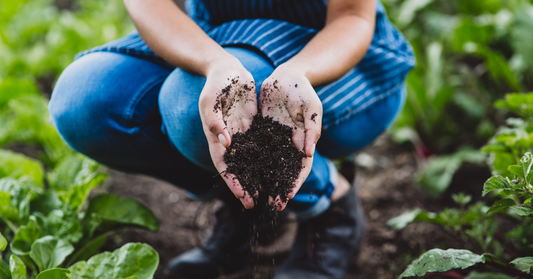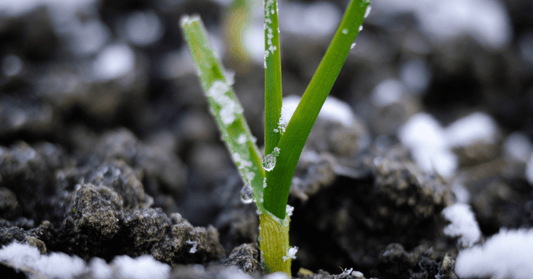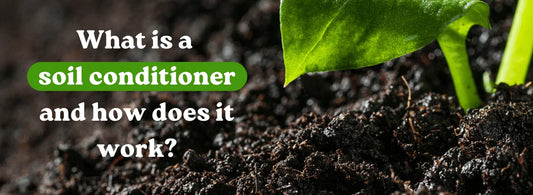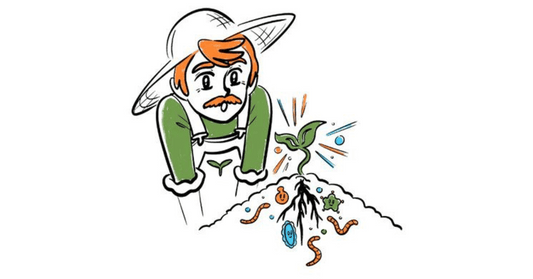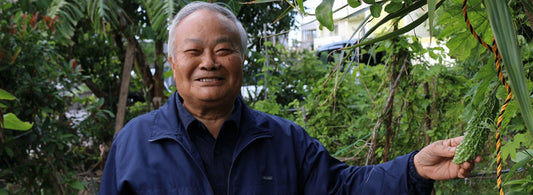
Soil Regeneration - The Four Keys to Restoring Healthy Soil
Farmers depend on healthy topsoil for their yield. But modern farming practices have left our soil with far fewer nutrients than it had in the past. To keep your topsoil fertile and productive, you need to protect and keep it.
For example, you can do this by using sustainable farming methods and preventing soil erosion. By using regenerative agriculture to fix your topsoil, you can make sure that you harvest will be healthy and full.
This article will look at four ways you can restore your topsoil.

What Is Topsoil?
Topsoil is the upper layer of soil that contains a high concentration of organic matter and is rich in nutrients. It is the foundation for plant growth, as it provides the necessary nutrients, water, and support for plants to thrive. Without topsoil, your crops would struggle to grow, and your yield would be greatly reduced.
Good topsoil contains the proper ratio of carbon to nitrogen, lots of organic matter for plant growth, enough water and oxygen to sustain plant life, beneficial microbes, and even earthworms and insects that support plant life. Topsoil is a living entity.
Poor topsoil has to be treated with fertilizer so that crops can grow and with herbicides to kill unwanted plants. Pesticides are applied to kill all insects, not just the harmful ones. When the insects are gone, the birds leave, and a field becomes a sorry imitation of what a healthy farm should be.
Without proper land use techniques, the soil becomes compacted and hostile to life. Crops become less and less healthy. Eventually, it will be impossible to grow anything at all.

What Is Destroying Our Soil?
Modern agriculture has had a devastating impact on soil health. While farmers grow more food crops than ever before, it's come at a cost to the topsoil that sustains our food systems. There are several reasons why topsoil can be eroded. Here are five possible causes:
Overuse of chemicals and fertilizers
When chemicals and fertilizers are applied to soil in excess, they can strip the soil of its nutrients and structure. This can lead to a number of problems, including low nutrients in the soil and little to no microbes left. Excessive use of chemicals and fertilizers can also cause the soil to become too acidic or alkaline, which can be harmful to plants. In addition, the runoff from these substances can pollute waterways and harm aquatic life. To avoid these issues, it is important to cut down on the use of chemicals and fertilizers.
Indiscriminate tilling
Tilling involves using machinery to loosen and turn over the soil. While tilling can be beneficial for some farming practices, such as helping to incorporate organic matter and controlling weeds, it can also lead to erosion if the soil is tilled too deeply or too frequently. When soil is tilled deeply, it can disrupt the structure of the soil, making it more susceptible to erosion. Tilling can also expose the soil to harsh weather elements, which can lead to erosion from wind and water. To minimize the risk of erosion, it is important to till the soil only when necessary and to use the minimum amount of tillage required.
Rainfall
When rain falls on bare soil, it can wash away the top layer of soil, leading to erosion. This is especially common in areas with high rainfall or steep slopes, where the water has more force to wash away the soil. To minimize the risk of erosion from rainfall, it is important to keep the soil covered with plants or other vegetation. This can help reduce the impact of the rain and hold the soil in place. In addition, using techniques such as terracing and contour planting can help slow the flow of water and prevent erosion on slopes.
Wind
Wind can also cause topsoil erosion, especially in dry, windy regions. When the wind blows across bare soil, it can pick up and carry away the topsoil. To protect against wind erosion, it is essential to keep the soil covered with plants or other vegetation. Using windbreaks, such as trees or hedges, can also help to reduce the impact of the wind and protect the soil.
Development
When land is developed for urban or industrial purposes, the soil is often disrupted or removed, leading to erosion. This can be especially problematic if the land is not properly re-vegetated or protected after development. To reduce the risk of erosion from development, it is vital that you take steps to preserve the soil and protect it from erosion. This can include measures such as grading the land to prevent water runoff, planting vegetation, and using erosion control products such as silt fences and straw bales.
Can Topsoil Be Regenerated?
Yes, it can! Topsoil regeneration is one of the goals of regenerative agriculture. If your topsoil has eroded due to the causes listed above, regenerative agriculture can help you restore your topsoil.
It's an easy process with several key parts. It requires a complete rethinking of how we grow food. Returning to traditional farming methods, reducing the number of chemicals used, and replacing natural microbes that benefit the soil are all good places to start.
Using organic matter like compost and properly handled manure instead of chemical fertilizers increases the health of the soil. Healthy soil attracts naturally occurring microbes and the earthworms and beneficial insects return.

4 Keys to Soil Regeneration
Soil contains a diverse community of microorganisms, including bacteria, fungi, and other organisms, that play important roles in soil health and plant growth. By increasing the amount of beneficial microorganisms in the soil, farmers can improve the structure and fertility of the soil and enhance crop yields.
There are several ways that farmers can increase the amount of beneficial microorganisms in the soil, such as:
1. Minimizing tillage
Tilling the soil can disrupt the structure of the soil and lead to erosion. To restore topsoil, it is important to minimize tillage and instead use techniques such as mulching and no-till farming, which can help to preserve the soil structure and promote the growth of beneficial microorganisms.
2. Increasing organic matter
Adding organic matter to the soil can help to improve the structure and fertility of the soil. This can also promote the growth of beneficial microorganisms, which can help break down organic matter and release nutrients into the soil. Beneficial microbes like yeasts and bacteria return to encourage strong root growth and help plants utilize the nutrients in the soil.
EM-1® is a microbial inoculate that contain beneficial microbes. This speeds up the process and improve soil health more quickly. The current high price of traditional fertilizers makes looking for healthier alternatives all the more attractive.
3. Using compost
Compost contains a variety of beneficial microorganisms that can help improve the soil's structure and fertility. By adding compost to the soil, farmers can increase the number of beneficial microorganisms and improve the health of the soil. Cover crops, such as legumes and grasses, can help protect the soil from erosion and improve its structure and fertility. These crops can also help fix nitrogen from the air and enrich the soil with nutrients.
4. Implement regenerative agricultural practices
Regenerative agriculture is a holistic approach to farming that focuses on building healthy soil and promoting biodiversity. This can include a range of practices that help to restore the soil and promote the growth of beneficial microorganisms, such as:
- Agroforestry: Agroforestry involves combining tree-based crops with annual or perennial crops or livestock. This can help to diversify the farm ecosystem and improve the structure and fertility of the soil.
- Holistic grazing: Holistic grazing involves moving livestock from one area to another in a planned and strategic manner. This can help to mimic the natural grazing patterns of wild herbivores and promote the growth of grasses and other vegetation, which can improve soil structure and fertility.
- Polycultures: Polycultures involve growing a diverse range of crops together in the same field. This can help to improve the soil structure and fertility, as well as promote the growth of beneficial microorganisms.
By implementing these and other regenerative agriculture practices, you can help restore topsoil and improve the productivity and sustainability of your farms.

Final thoughts
Regenerative agriculture and increasing the number of beneficial microorganisms are key strategies for restoring topsoil and improving its quality. Increasing the number of beneficial microorganisms in the soil can help to break down organic matter and release nutrients into the soil, further enhancing the health and productivity of the soil. By following these principles, you can effectively restore your topsoil and support the production of nutrient-rich food for a healthy yield.
